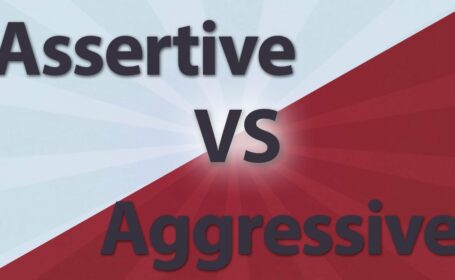

EU Manpower Market Surges Despite Economic Headwinds
- trienkhaiweb
- 22 January, 2024
- 0 Comments
The EU’s labor market has proven its resilience against the economic fallout from Russia’s invasion of Ukraine and the energy crisis it unleashed. Unemployment rates continue to linger near record lows, a remarkable feat considering the turmoil of 2022’s latter half. Indeed, job creation persists at a healthy pace, even as businesses across the bloc grapple with persistent manpower shortages.
Several factors drive this impressive performance. Labor market participation, stunted by the pandemic, has resumed its long-term upward climb. Women and older workers are particularly active, invigorating the EU’s available manpower pool. EU mobility initiatives also bolster the workforce— citizens and non-EU nationals alike are seizing opportunities across borders. With this robust participation, the EU stays firmly on track to hit a key social target: a 78% employment rate by 2030.

Manpower Shortages: A Double-Edged Sword
While a low headline unemployment rate of 6% is encouraging, it masks deeper challenges. Notably, specific sectors tied to imported energy are restructuring to cope with soaring costs. Job losses in these areas are a sad reality, though the overall labor market picture is positive. Vigilant policymakers must support vulnerable sectors and workers, while ensuring investments flow into growth areas. By championing skills development, digitalization, and the green transition, the EU can leverage this crisis to build an even stronger and more dynamic labor market long-term.
The first half of 2023 saw a 2% annual growth rate in employment – a positive sign of the labor market’s momentum. Many businesses, however, struggle to find the right manpower to match these opportunities. This shortage reflects a shift in dynamics. The economic recovery from prior turbulence made businesses wary of hiring; now, they’re eager to expand.
Workers, sensing abundant possibilities, are more discerning when choosing employers. They seek not merely a job, but the right job—competitive wages, fulfilling work, and a balance that enriches their lives beyond the workplace. Businesses must adapt in turn, offering enticing benefits and training programs to attract qualified manpower. This dance of opportunity, though leading to some mismatches in the short run, should ideally lead to greater economic prosperity.
Unexpected Resilience: Energy Prices and Employment
Notably, dramatic energy price rises hasn’t triggered the expected widespread job losses. This hints at complex factors beyond a direct energy-cost-to-jobs relationship. Perhaps increased revenue for energy firms cushioned the blow, or the manpower within these industries was deemed vital despite high operating costs. Also, if other sectors experienced growth, even some slowing down in energy-intensive industries wouldn’t lead to a mass layoff.
Further analysis is crucial to understand how energy prices, regional differences, types of energy use, and the health of other industries come together to create this unique situation. This anomaly suggests more resilience than we might initially assume.

Tight Manpower Market Shields Against Slowdown
It’s surprising, but despite weak economic growth, unemployment is proving stubbornly resistant. This paradox stems from the still-tight labor market. Even with softened demand, employers might first turn to reduce overtime, hold off on new hires, or re-evaluate existing roles, rather than immediately let manpower go.
Why? The recent manpower shortage remains fresh, making businesses hesitant to lose skilled people they might struggle to replace. Global uncertainty about inflation and geopolitics might make firms take a cautious approach, opting to retain current manpower against future disruptions. Further, the nature of the slowdown matters – unlike a sharp crash affecting everyone, a slow down concentrated in specific industries allows other areas to provide a buffer.
The question is whether this resilience will last if the slowdown continues. In that case, layoffs might become inevitable. Yet for now, the tight labor market provides a surprising cushion for the EU.

The Growing EU Workforce: A Driving Force
A steadily expanding workforce fuels the EU’s robust job market. Participation, despite a COVID-19 dip, matches its pre-pandemic upward trend. Women, older workers, EU mobile citizens, and those from beyond its borders are all critical pieces of this puzzle.
Women are increasingly vital, thanks to factors like better childcare options and a focus on gender equality. Older workers, healthier and living longer, also bring invaluable experience. Additionally, manpower mobility both within the EU and from outside its borders ensures a steady infusion of talent to meet the bloc’s ambitious employment targets.
The EU’s headline target—78% employment rate by 2030—looks more achievable with each day. This employment surge means a stronger economy, greater social inclusion, and better lives for its citizens.
In Conclusion
The EU’s manpower market presents a story of growth fueled by a diverse and expanding workforce. This trend, if supported thoughtfully, promises to not only meet targets but build and even more inclusive and dynamic economy for the EU’s future.
Related articles
11 Universal Truths That Fuel Successful Research in Manpower Management
In today’s rapidly evolving business landscape, staying ahead of the curve requires a commitment to ongoing research and analysis. This is especially true in the field of manpower management, where understanding trends and adapting to change is crucial for success. Whether you’re a seasoned HR professional or a business leader seeking to optimize your workforce,…
15 Effective Manpower Recruitment Strategies: A Quinn Vietnam Manpower Guide
In today’s competitive business landscape, securing top talent is crucial for success. Effective manpower recruitment is the foundation upon which organizations build high-performing teams and achieve their goals. This comprehensive guide, brought to you by Quinn Vietnam Manpower, outlines 15 proven strategies to optimize your recruitment process and attract the best talent in 2025. Develop…
17 Essential Management Skills for Success
The business landscape is constantly evolving, and 2025 promises to bring new challenges and opportunities for managers across all industries. While there’s no magic formula for becoming a great leader, cultivating a strong set of management skills is crucial for navigating the complexities of the modern workplace. This article, brought to you by Quinn Vietnam…
20 Qualities of a True Leader in the Manpower Industry
Leadership in the manpower industry requires a unique blend of skills and attributes. At Quinn Vietnam Manpower, we recognize the importance of strong leadership in driving success for our clients and partners. As we move into 2025, the demands on leaders are evolving, requiring adaptability, vision, and a deep understanding of the changing dynamics of…
Aligning Purpose and Objectives for Manpower Success
In the dynamic landscape of manpower management in 2025, understanding the difference between purpose and objectives is crucial for organizational success. Quinn Vietnam Manpower recognizes that a clear articulation of purpose and well-defined objectives are essential for driving performance, fostering employee engagement, and achieving strategic goals. This article delves into the critical distinction between purpose…
Assertive vs. Aggressive Leadership: Finding the Balance
In today’s dynamic business environment, effective leadership is crucial for success. Leaders need to be assertive to drive results, inspire their teams, and navigate challenges. However, there’s a fine line between assertiveness and aggression, and crossing it can create a toxic work environment, hinder productivity, and damage morale. This article, brought to you by Quinn…







